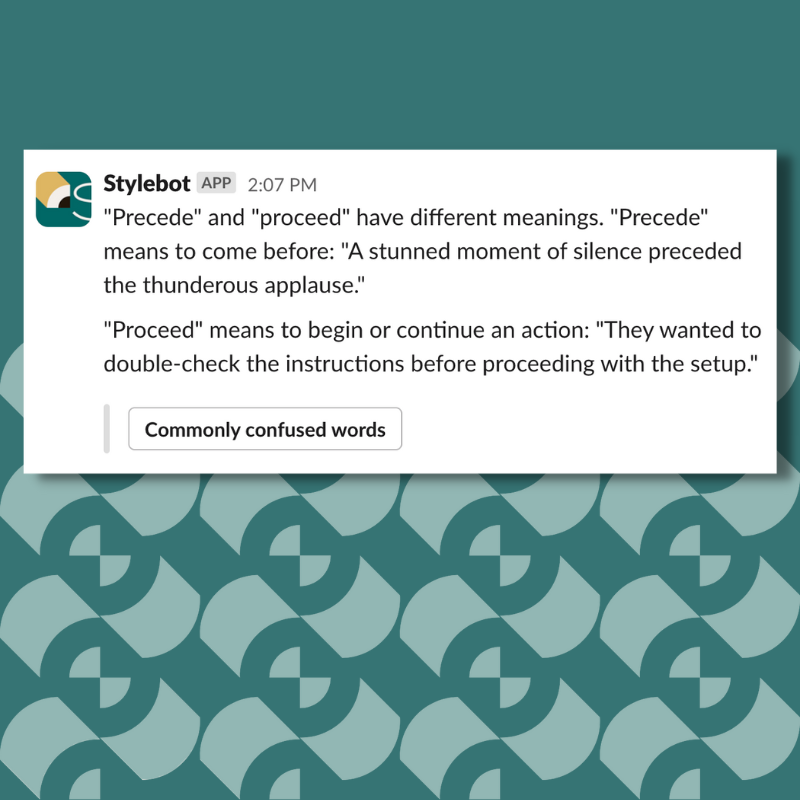If you’re taking a break from your day to check your email and aren’t sure if you should proceed or precede with reading this one, we’re here to help (and that means yes, you should keep reading).
If you’ve confused these two words, you’re not alone. “Precede” and “proceed” are near homophones and have similar meanings. But they aren’t interchangeable. So how do you keep their definitions straight?
You can’t do it by looking at their suffixes. Words that end in -cede or -ceed come from the Latin cedere, meaning “to go, move away, withdraw or yield.” Many words in English were formed by adding a prefix to -cede or -ceed. “Secede” means to withdraw from. “Succeed” can mean to come after, as in “she was succeeded by.” And of course, you can “cede” your time.
So why do we have both -cede and -ceed? It has to do with their pathways to English, not the meaning. Words ending in -cede came from Latin to English by way of French, while -ceed words went through Middle English instead.
That leaves us with the prefixes, and that’s your key to remembering the difference. The “pro” in “proceed” means “forward” (think “progress”), while the “pre” in “precede” means “before” (think “preface”).
And there you have it: “Proceed” means to move forward, to continue action, or to come forth from something. “Precede” means to go before, be earlier than, or surpass in rank, dignity or importance.

All right, now that you know, you can proceed with your day.
And don’t forget: We’re offering 10% off Stylebot subscriptions through the end of the year. Create your account here and use code HOLIDAY2023 at checkout.
💬 Need more tips?
Want to get writing tips like these on demand? Try Stylebot for free.
📝 About Stylebot
Stylebot helps media professionals save time without sacrificing quality by answering editing questions on Slack, Microsoft Teams and Google Chrome. We’re on a mission to make editing faster, easier and more fun ✨ Learn more about Stylebot or follow us Instagram, X or LinkedIn.
